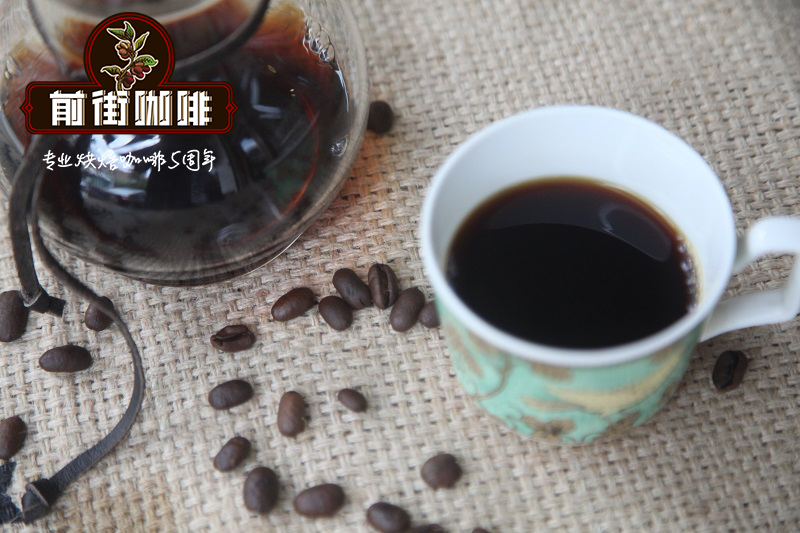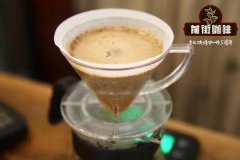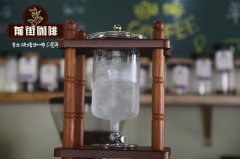Introduction to the flavor characteristics of Blue Mountain round beans in Sherwood Manor, Jamaica. How does Blue Mountain PB taste?

Blue Mountain Peas at Sherwood Manor, Jamaica
Production area: Sherwood
Planting altitude: 1200-1600 m
Variety: iron pickup
Type of soil: volcanic soil
Grading standard: Peaberry
Treatment: washing treatment
Harvesting method: manual harvesting
The manor was founded in 1797
Average annual temperature / rainfall: 21 ℃ / 2500 mm
Flavor description: there are apple, lemon, jasmine, rose aromas, soft fruit acidity and a little bright, distinct fruit acidity and transformed into soft sweetness, moderate oil texture, smooth and smooth throat, all the flavors are perfectly balanced.
Sherwood Coffee Manor is owned by a small family in Jamaica and its operating office is located in the town of Hagley Gap in the St. Thomas producing area in southeastern Jamaica. Its output accounts for 2% of the total harvest of Blue Mountain Coffee. Handmade coffee is regarded as the best coffee in Jamaica and is selected as a quality-guaranteed Blue Mountain coffee by the Jamaican Coffee Association (CIBOJ). As of 2015, Sherwood Forest is one of the estates owned by RSW Manor. At present, RSW retains only the highest elevation block Sherwood, and Sherwood has been independent ever since. The estate and processing plant have been in operation since 1797 and were run by the Deichman family in the 1950s. At that time, the father of the current operator Charles bought the land and replanted the farmland, which is about 1372m above sea level.
In 1999, Deichman upgraded the manor and processing plant equipment to handle raw beans with new and modern equipment, while retaining traditional technology and implementing strict environmental protection policies. The proportion of male and female employees of the manor is about half, and all the management and employees are from local villages. Due to the high altitude, the shady clouds on the mountains in the afternoon are very beneficial to the growth of coffee trees, avoiding the overheated sun at noon and making the growth and nutrient absorption of coffee fruits more complete. After other Blue Mountains in Jamaica, the harvest season is from March to June each year, and fresh hand-picked red fruits from proprietary estates and a small number of fresh red fruits from well-known Blue Mountain small farms such as Arntully and Moy Hall are sent to the washing plant in Sherwood. Sherwood insists that he will never take coffee from an unknown source.
The picked red fruit was immediately peeled and fully fermented after 24 hours of washing, so as to improve the flavor. During the washing process, the pulp was rudely shaved off without machine or brush brushing, and the pulp was naturally peeled off only by fermentation. Then the moisture content of raw beans was reduced to 11.5% by 100% full-sun drying, and artificial drying was completely abandoned. It also makes the overall aroma and consistency of the coffee thicker because of this sun-drying process. After drying, the shelled beans are stored in an underground warehouse with temperature and humidity control for at least eight weeks, and then shelled. The warehouse is equipped with two commercial dehumidifiers and two tons of air conditioning equipment, and the environment is controlled at 19.4 degrees and 52% of temperature and humidity. In order to ensure quality, Sherwood only provides small batches of hand-picked raw beans and well-stored raw beans to customers, and does not hoard raw beans for future sales.
In the process of dry treatment, raw coffee beans are sent to the warehouse for storage the next night until delivered to the Jamaican Coffee Association (CIBOJ). CIBOJ will check the size, defects and water content of raw beans by color inspection and cup testing. Finally, these refined Sherwood raw beans will be exported under the trademark "SFCC" (Sherwood Forest Coffee Co.).
Important Notice :
前街咖啡 FrontStreet Coffee has moved to new addredd:
FrontStreet Coffee Address: 315,Donghua East Road,GuangZhou
Tel:020 38364473
- Prev

Island Coffee | Dominica Sheba Otura washed coffee features a symbol of high quality
Dominica Sheba Otura washing area: altitude: 1500 meters above sea level: washing flavor: emitting a light aroma, faint fruit aroma, aftertaste lingering, smooth 1735 coffee was introduced by the Spanish-controlled island of Hispaniola, which is now the island of Dominica, the coffee industry gradually received attention in 1822-1844, 1956
- Next

Nicaraguan Miracle Manor Java Nickamy treatment Flavor description what is the variety of Java Nika
Nicaraguan Miracle Manor Java Nickamie treatment production area: Jinotega planting altitude: 1115-1400 m varieties: Java Nika soil species: volcanic soil classification standard: SHB treatment: honey treatment harvest method: artificial harvest manor was established in 1908: planting area: about 26 hectares annual average temperature / rainfall: about 21 ℃ / about 1000 mm flavor: lemon, citrus
Related
- Detailed explanation of Jadeite planting Land in Panamanian Jadeite Manor introduction to the grading system of Jadeite competitive bidding, Red bid, Green bid and Rose Summer
- Story of Coffee planting in Brenka region of Costa Rica Stonehenge Manor anaerobic heavy honey treatment of flavor mouth
- What's on the barrel of Blue Mountain Coffee beans?
- Can American coffee also pull flowers? How to use hot American style to pull out a good-looking pattern?
- Can you make a cold extract with coffee beans? What is the right proportion for cold-extracted coffee formula?
- Indonesian PWN Gold Mandrine Coffee Origin Features Flavor How to Chong? Mandolin coffee is American.
- A brief introduction to the flavor characteristics of Brazilian yellow bourbon coffee beans
- What is the effect of different water quality on the flavor of cold-extracted coffee? What kind of water is best for brewing coffee?
- Why do you think of Rose Summer whenever you mention Panamanian coffee?
- Introduction to the characteristics of authentic blue mountain coffee bean producing areas? What is the CIB Coffee Authority in Jamaica?

